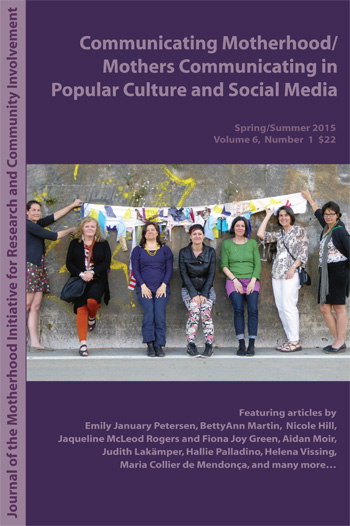Director of Operations Meets Gangster from the Mother-hood: Consumer Culture and the Marketing of Maternal Identities
Abstract
Representations of the maternal in consumer culture reinscribe the interests of the dominant culture through a mechanism of repression and wish fulfillment, whereby maternal anxiety is assuaged with promises of empowerment and adulation. In a world with few existential bearings, in which community has been degraded through the disembedding and sequestering of personal experience, individuals acquiesce to mediated representations and consumable identities to protect against cognitive dissonance and ontological insecurity. However, mothers are particularly vulnerable to the cultural forces of mediation and commodification, given their struggle to negotiate the disjuncture between the institutional demands of motherhood and their personal knowledge of mothering. By deconstructing maternal identity as represented in the “World’s Toughest Job” and “The Mother-hood” YouTube commercials, this article explores the power of consumer culture to sell images of motherhood that women can neither achieve nor abandon, because they effectively quell anxiety regarding the oppressive conditions of maternal labour, by offering utopian visions of elevated social status and collectivity. In both cases, buying into a prescribed identity bestows the benefits of membership; however, careful scrutiny reveals that cultural reproductions advance a fantasy of collectivity that is a poor substitute for individual agency. Ultimately, authenticity, as it relates to motherhood, is only possible when the personal meaning of experience is restored as the primary referent or ‘expert text’ in the practice of mothering.Downloads
How to Cite
Issue
Section
License
All intellectual property in relation to material included on this site belongs to the Motherhood Initiative for Research and Community Involvement (MIRCI). All material on this site is protected by Canadian and international copyright and other intellectual property laws. Users may not do anything which interferes with or breaches those laws or the intellectual property rights in the material. All materials on the Motherhood Initiative for Research and Community Involvement (MIRCI) are copyrighted and all rights are reserved. Any reproduction, modification, publication, transmission, transfer, sale, distribution, display or exploitation of the information, in any form or by any means, or its storage in a retrieval system, whether in whole or in part, without the express written permission of the Motherhood Initiative for Research and Community Involvement (MIRCI) is prohibited. Please contact us for permission to reproduce any of our materials. This site may include third party content which is subject to that third party's terms and conditions of use.


